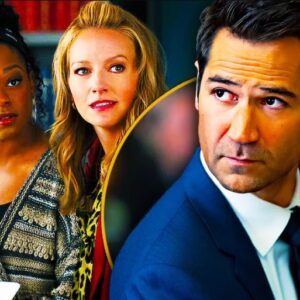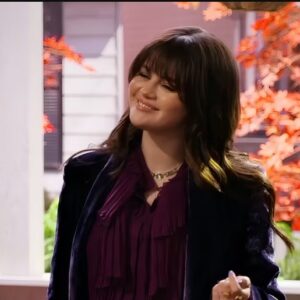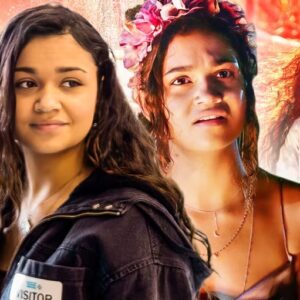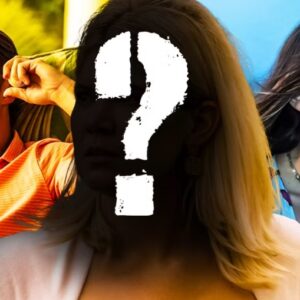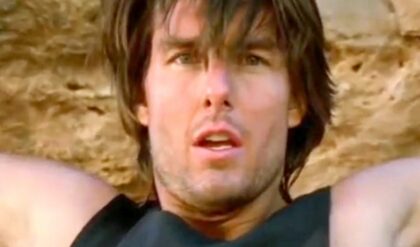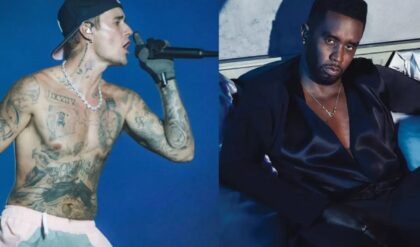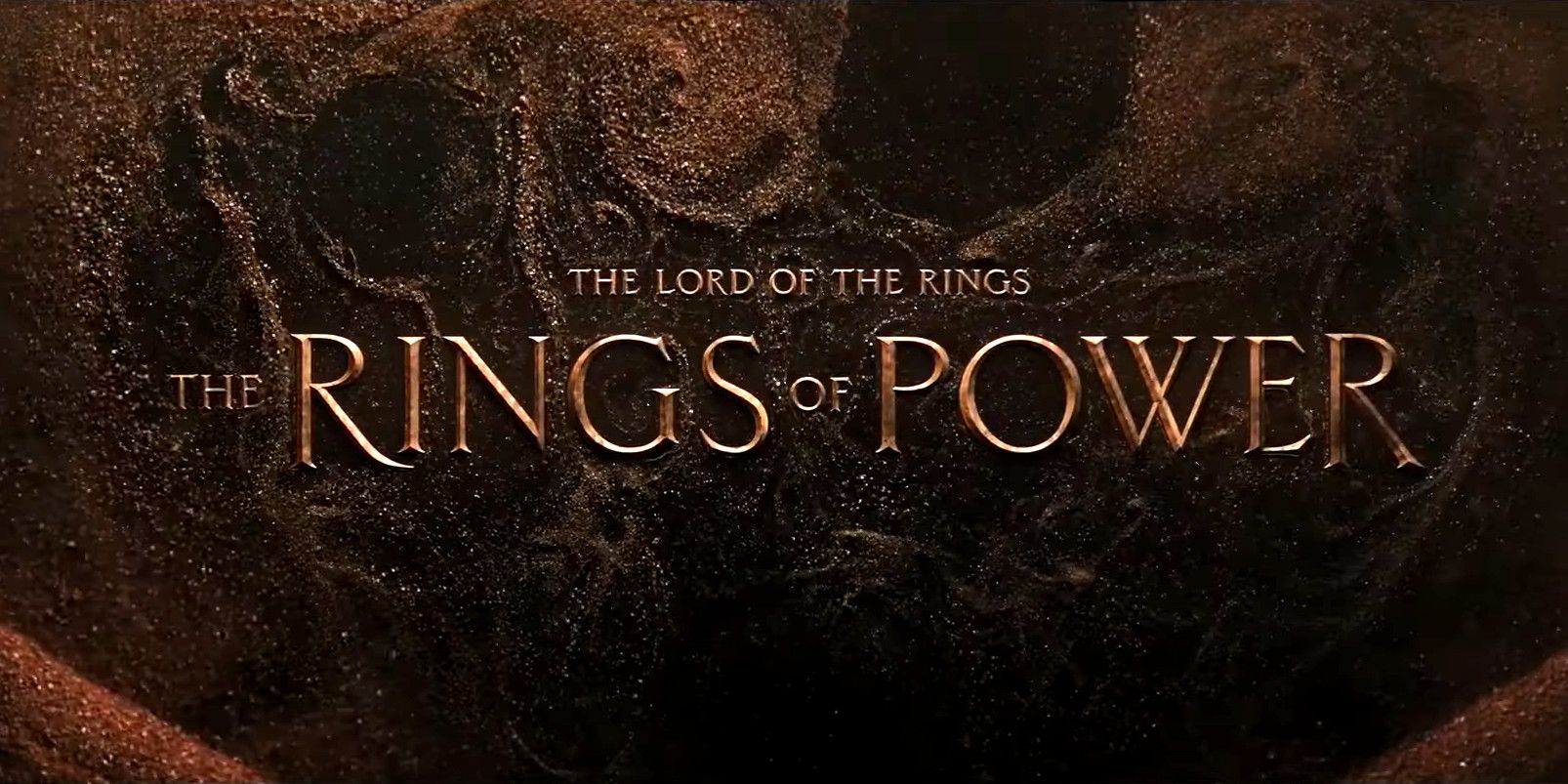
By singing, the Ainur brought the universe into existence. Just as the Ainur shaped reality through music, a Chladni table shapes sand through sound, making it the perfect visualization of a complex and magical concept. But that was not the only hidden significance of The Rings of Power‘s title sequence. The various symbols that the sand formed were references to the lore of The Lord of the Rings and of Tolkien’s other Middle-earth stories. Both seasons had similar title sequences, but the symbols that appeared in them varied. They alluded to important characters in Middle-earth’s history, iconic objects from The Lord of the Rings, and world-changing events that played out throughout the series.
The Rings of Power’s Title Sequence Symbolized Men and Elves Alike
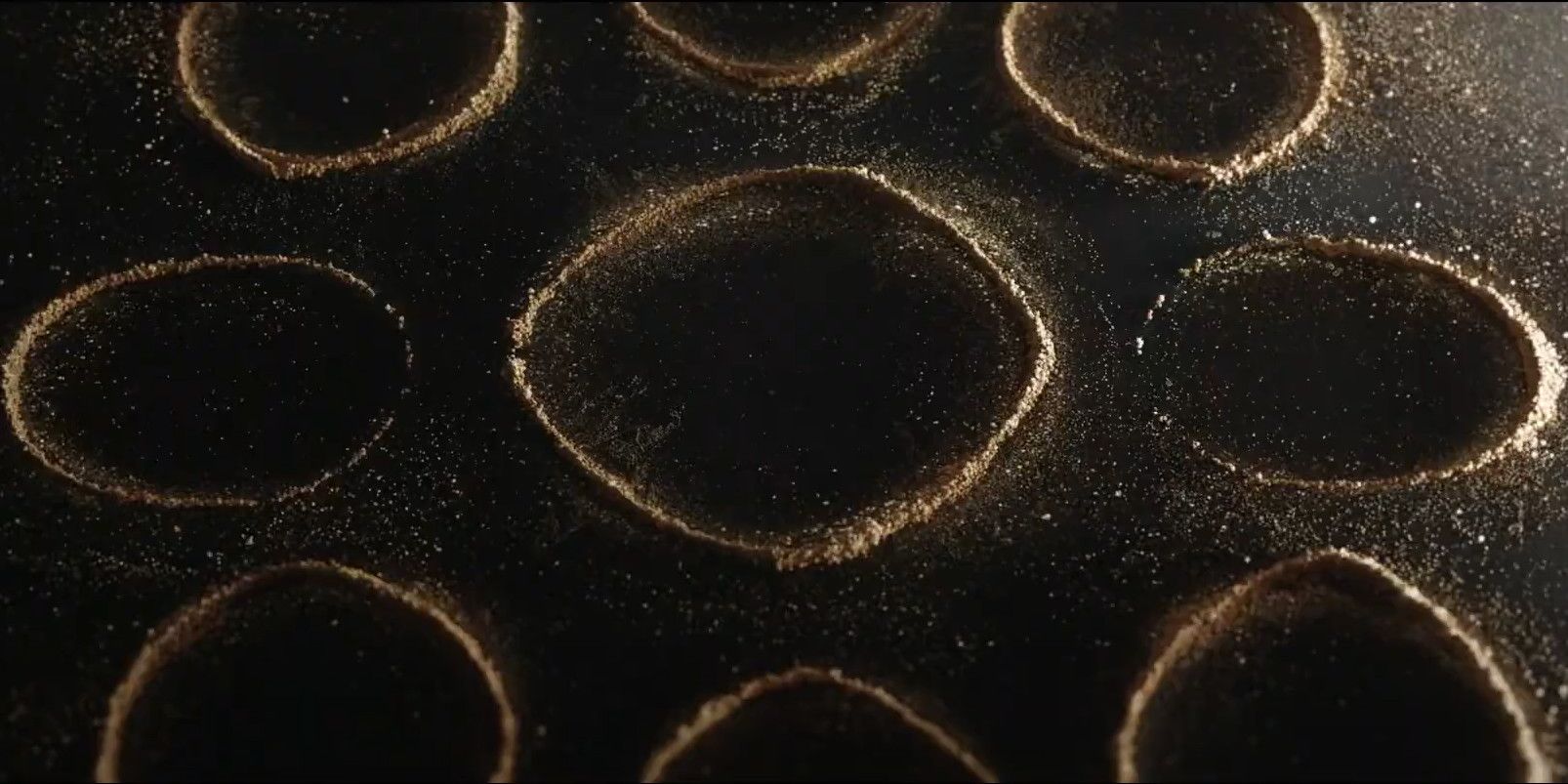
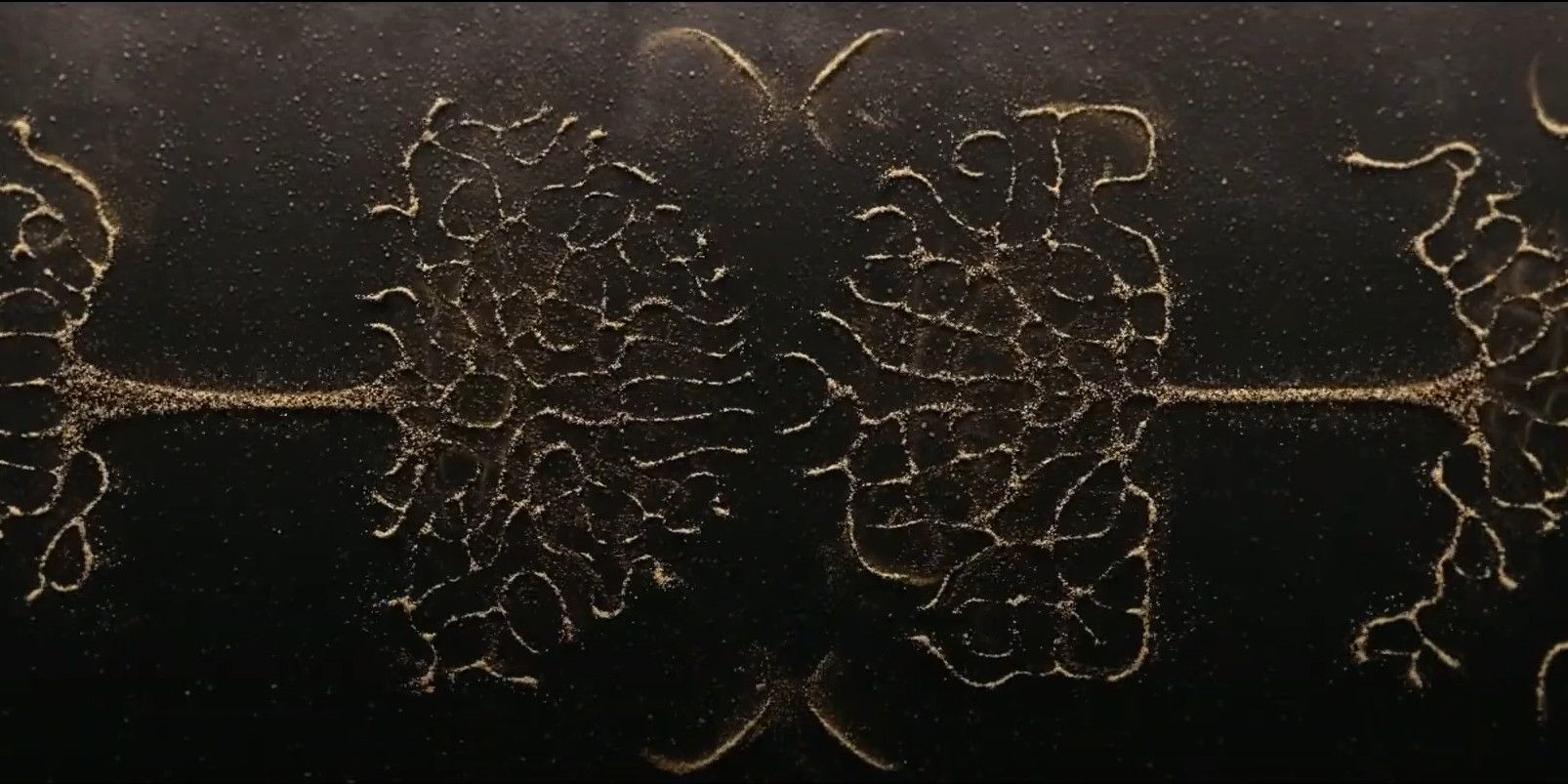
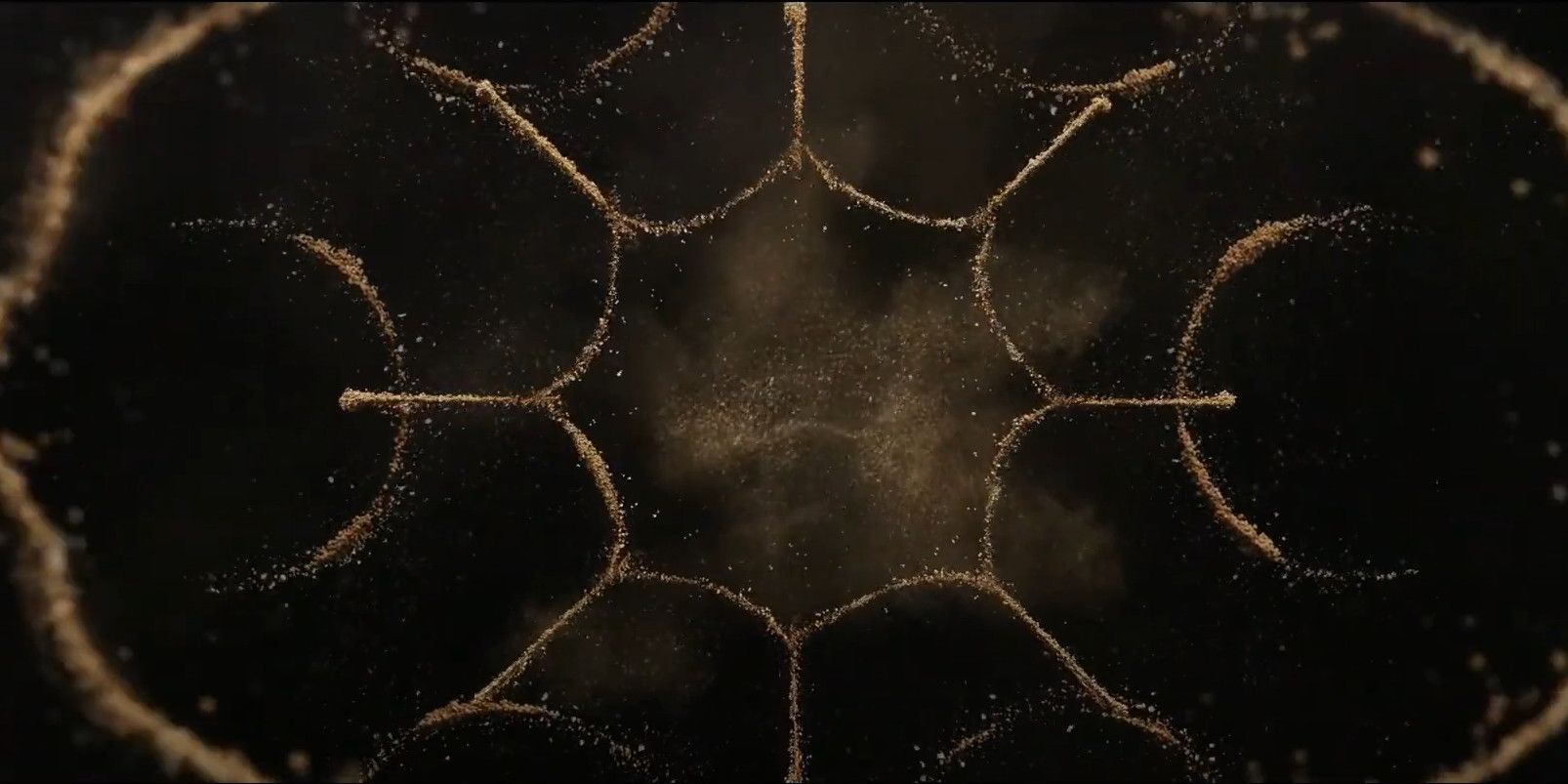
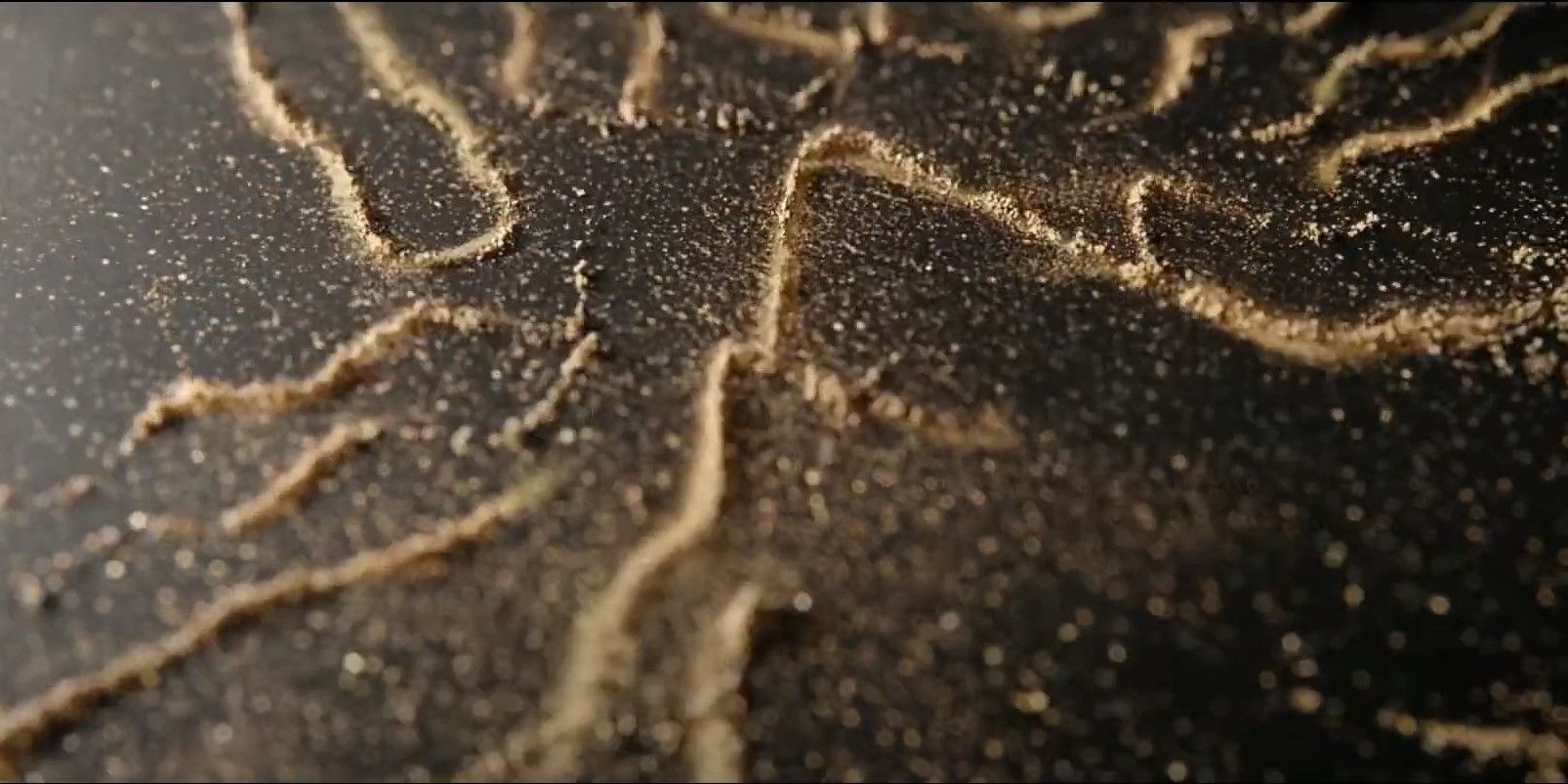




Bear McCreary provided most of the music for The Rings of Power, but the track that played during the title sequence was instead composed by Howard Shore, who previously created the soundtracks for Peter Jackson’s The Lord of the Rings and The Hobbit films.
The Rings of Power changed the order in which the Rings were made; in the series, the Three Rings were the first, but in Tolkien’s writings, they were the last, not counting the One Ring.
Season 1’s title sequence opened with nine circles, representing the Nine Rings that Sauron distributed among the race of Men to create the Nazgûl. At different points in the title sequence, the camera zoomed in on just seven or three circles, representing the Seven Rings that Sauron gave to the Dwarves and the Three Rings that the Elves kept for themselves. Since the Rings of Power gave the series its title, it is fitting that they appeared first in the sequence. After the circles, the sand took the form of a pair of trees, representing the Two Trees of Valinor. As Galadriel described at the start of the first episode, the Two Trees provided light to Valinor and the rest of the world, but Morgoth destroyed them, which was one of the reasons that the Elves sought vengeance against him in Middle-earth.
The next few symbols were more abstract. There was a shape with eight corners, which could have been a nod to the eight-pointed star that Galadriel’s uncle, Fëanor, used as his emblem. In The Silmarillion, Fëanor was the King of the Noldor, and he led the Elves in their fight against Morgoth. He was driven by an obsessive desire to reclaim the magic gems known as Silmarils, which Morgoth stole when he destroyed the Two Trees. Towards the end of the title sequence, the sand formed the shape of three mountain peaks. There were many mountains in The Rings of Power, most notably Mount Doom in Mordor, but it only had one peak. More likely, the image represented Celebdil, Caradhras, and Fanuidhol, the three mountains that stood above Moria. It is also possible that the image was a reference to Thangorodrim, the three mountains beneath which Morgoth built his stronghold, Angband, in The Silmarillion.
The Rings of Power’s Title Sequence Showed Morgoth’s Corruption
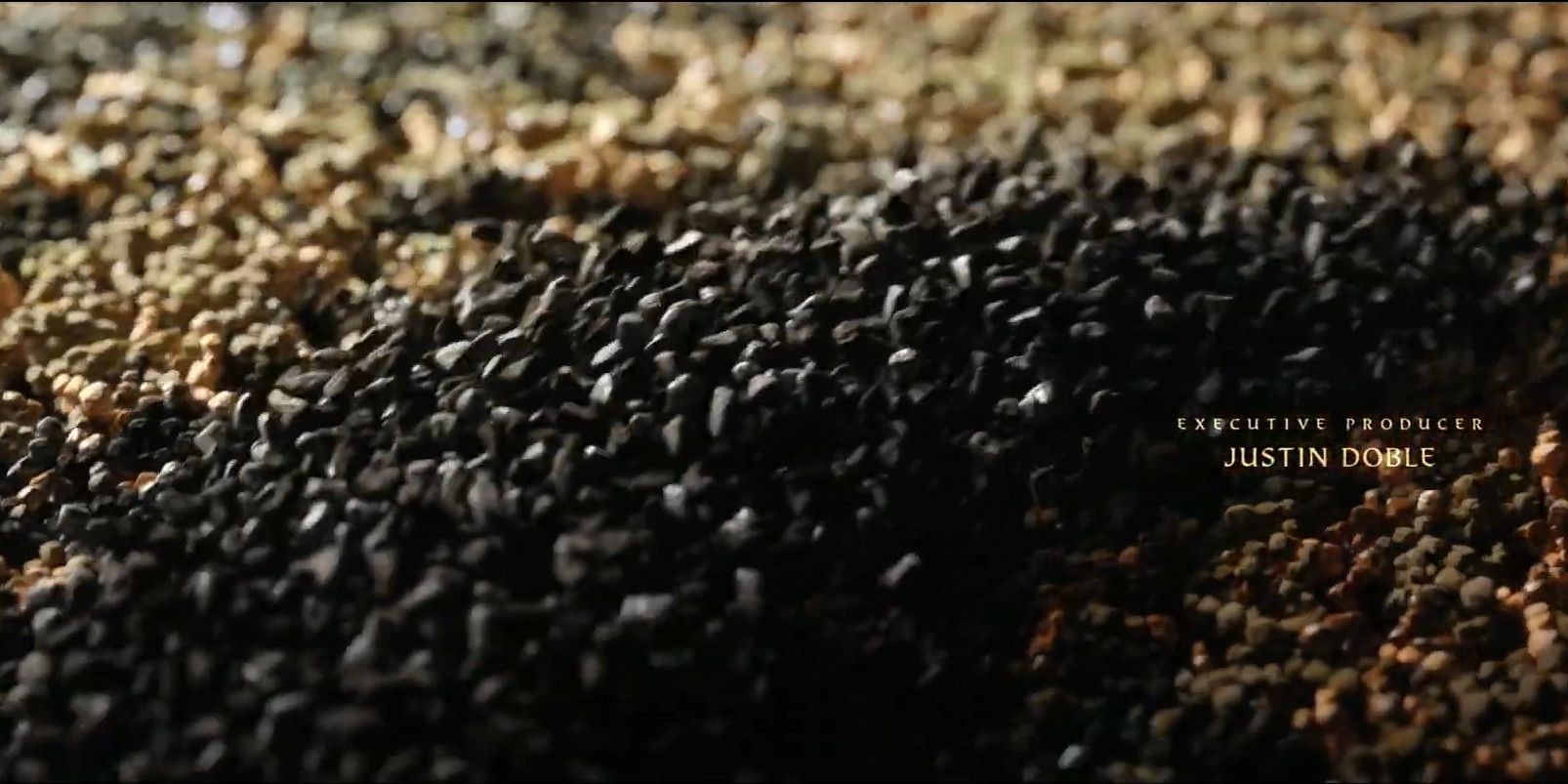

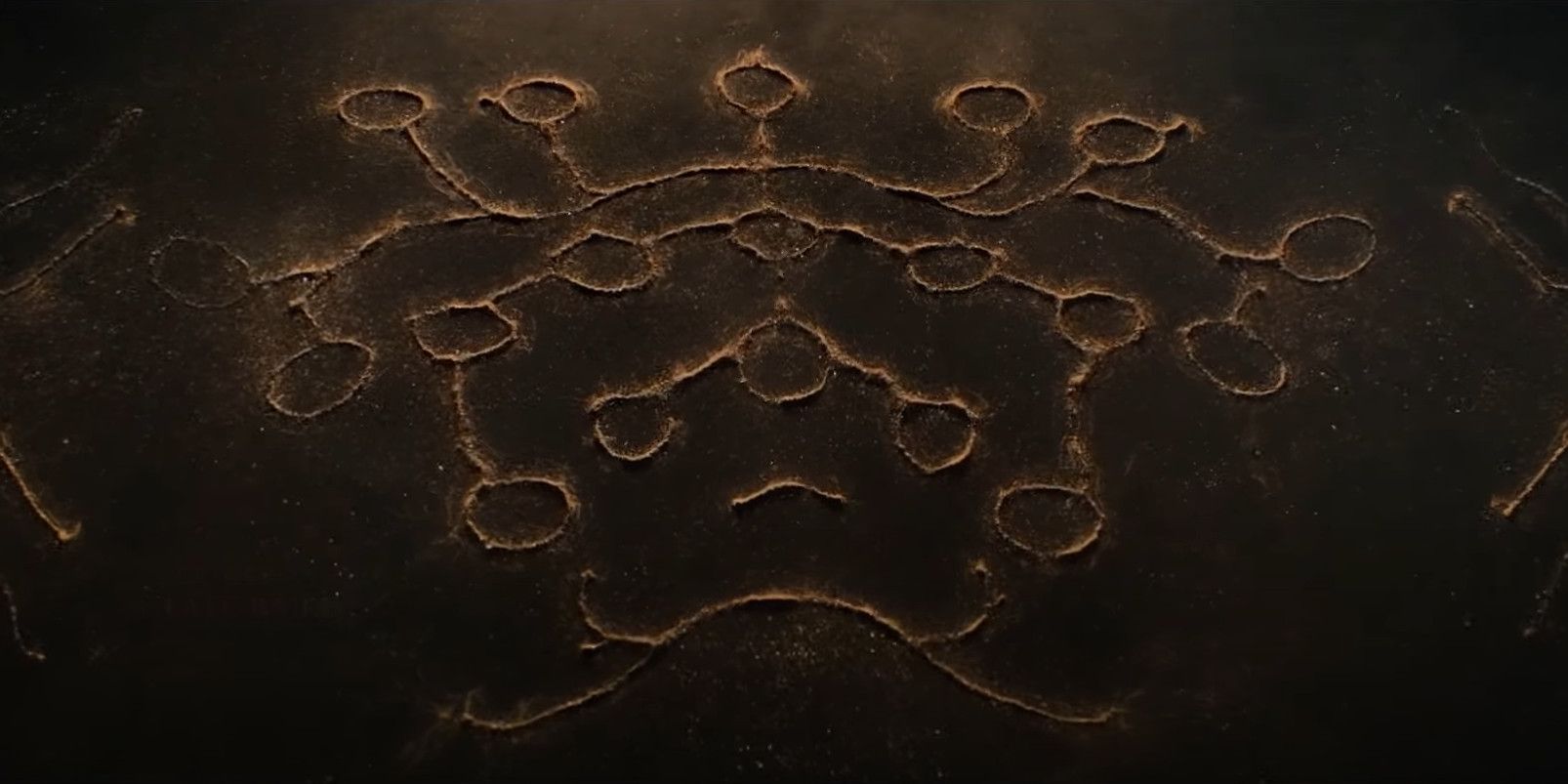
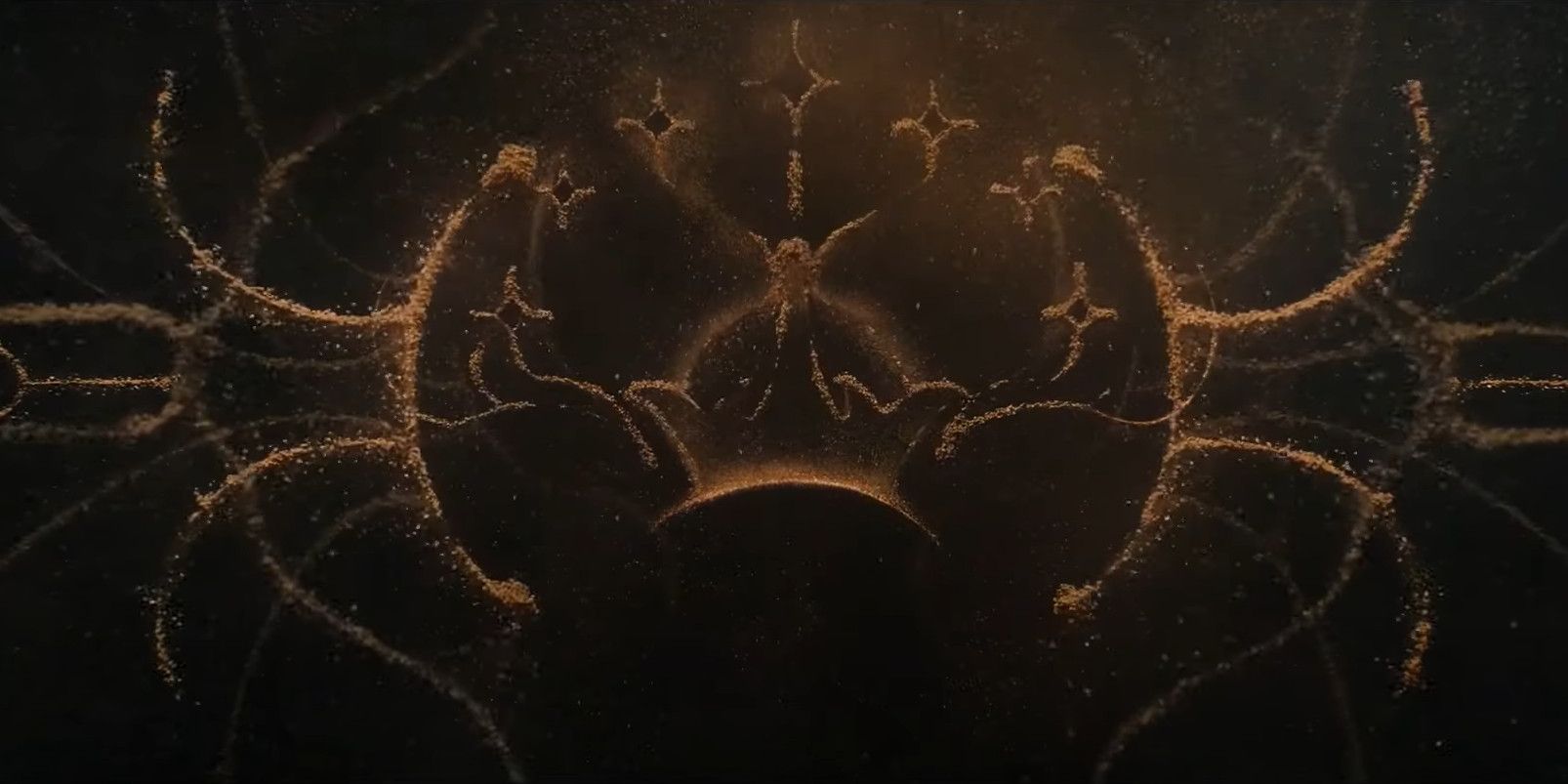




Sauron’s slime form was original to the series; in Tolkien’s writings, Sauron turned into a cloud of black smoke when his body was destroyed.
About halfway through the sequence, black sand began to snake its way through the gold sand and disrupt its patterns. This was another reference to “Ainulindalë.” Morgoth, who was known as Melkor at the time, was one of the Ainur who created the universe through song. Melkor sought “power and glory,” so instead of following Ilúvatar’s lead, he sang his discordant tune. Tolkien wrote,
It was loud, and vain, and endlessly repeated; and it had little harmony, but rather a clamorous unison as of many trumpets braying upon a few notes. And it essayed to drown the other music by the violence of its voice.
The Discord of Melkor was the reason that evil existed in Middle-earth. The choice to represent Melkor’s role in the Music of the Ainur as a mass of black sand paralleled the black, slimy form that Sauron assumed after Adar and the Orcs assassinated him in the flashback from The Rings of Power‘s second season.
The images in Season 2’s title sequence were clearer. Once again, it began with several circles, this time numbering nineteen. This represented every Ring of Power except the One Ring, which was the only major Ring from Tolkien’s lore that had not yet been crafted by the end of the season. After that, the sand took on a series of shapes associated with the Dwarves of Moria. First was a crown with seven stars above it, representing the crown of King Durin and the constellation that Durin the Deathless saw when he established Moria. The same image appeared on the Doors of Durin. This doubled as a potential reference to the crest that Elendil and his descendants used: a crown, seven stars, and a tree. Aragorn displayed a banner bearing this crest when he arrived at the Battle of the Pelennor Fields in The Lord of the Rings. However, Tolkien described the stars on Elendil’s crest as being below the crown rather than above it like on the Doors of Durin.
The Rings of Power’s Title Sequence Foreshadowed its Greatest Threats

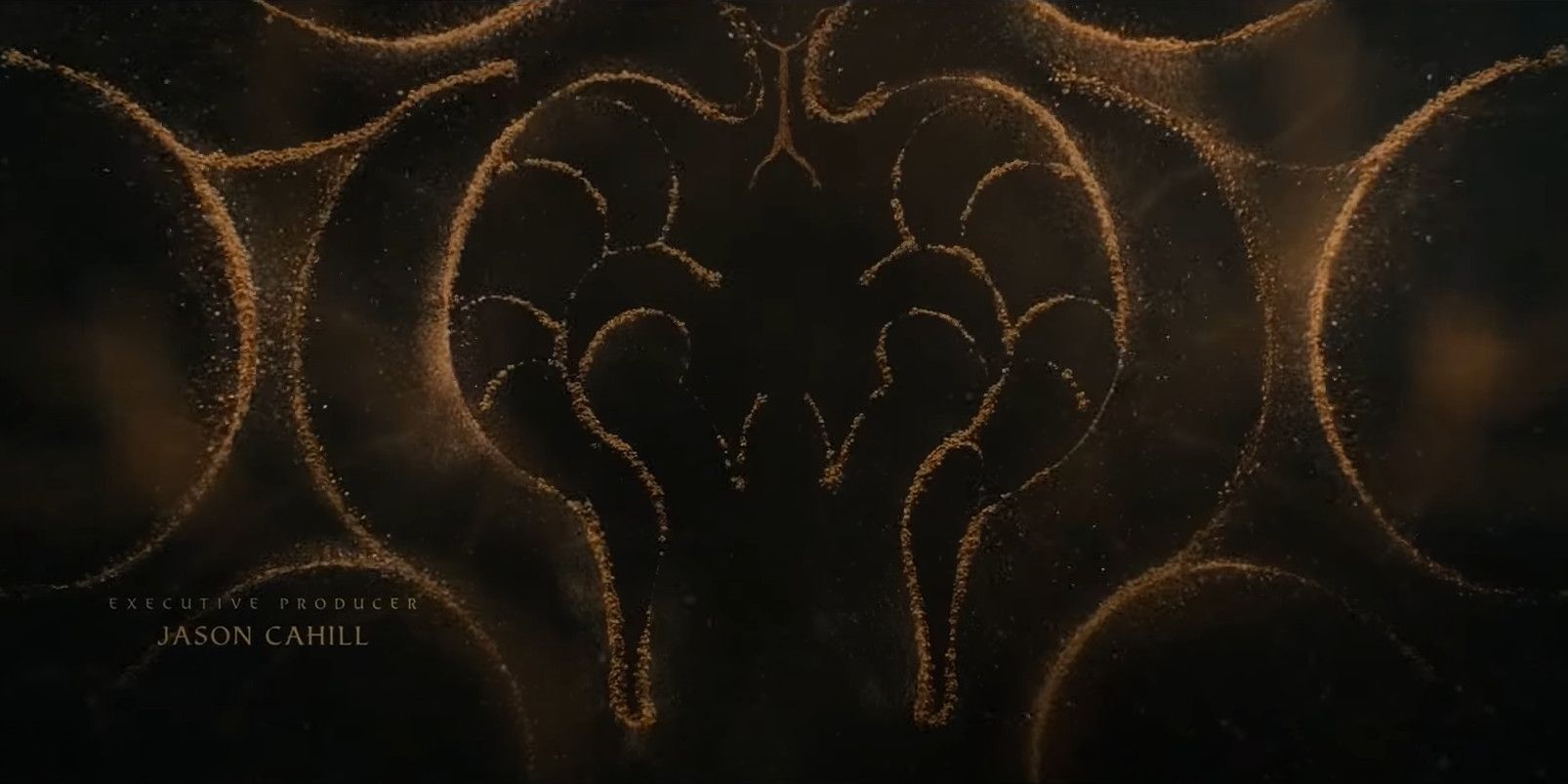
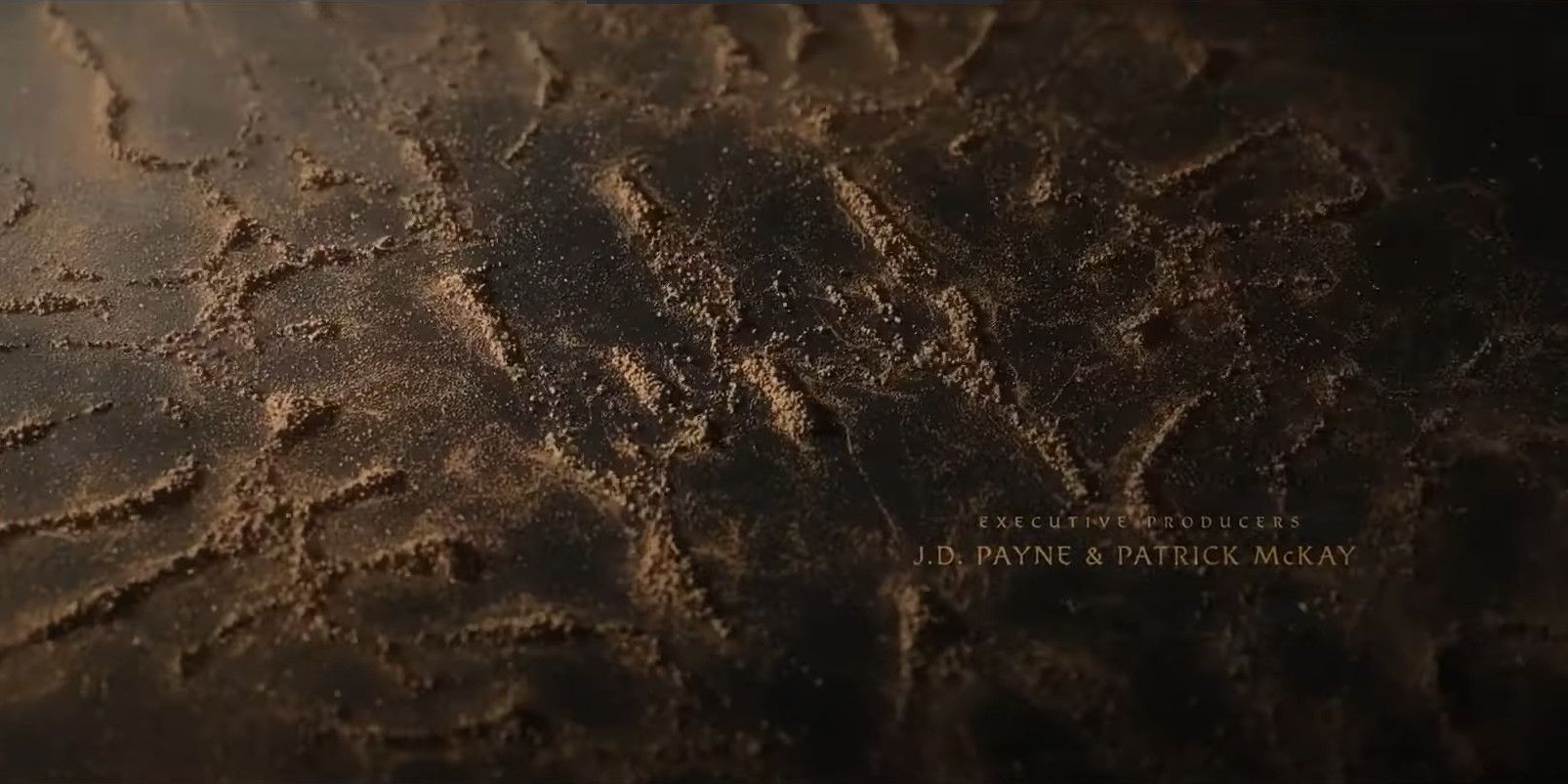
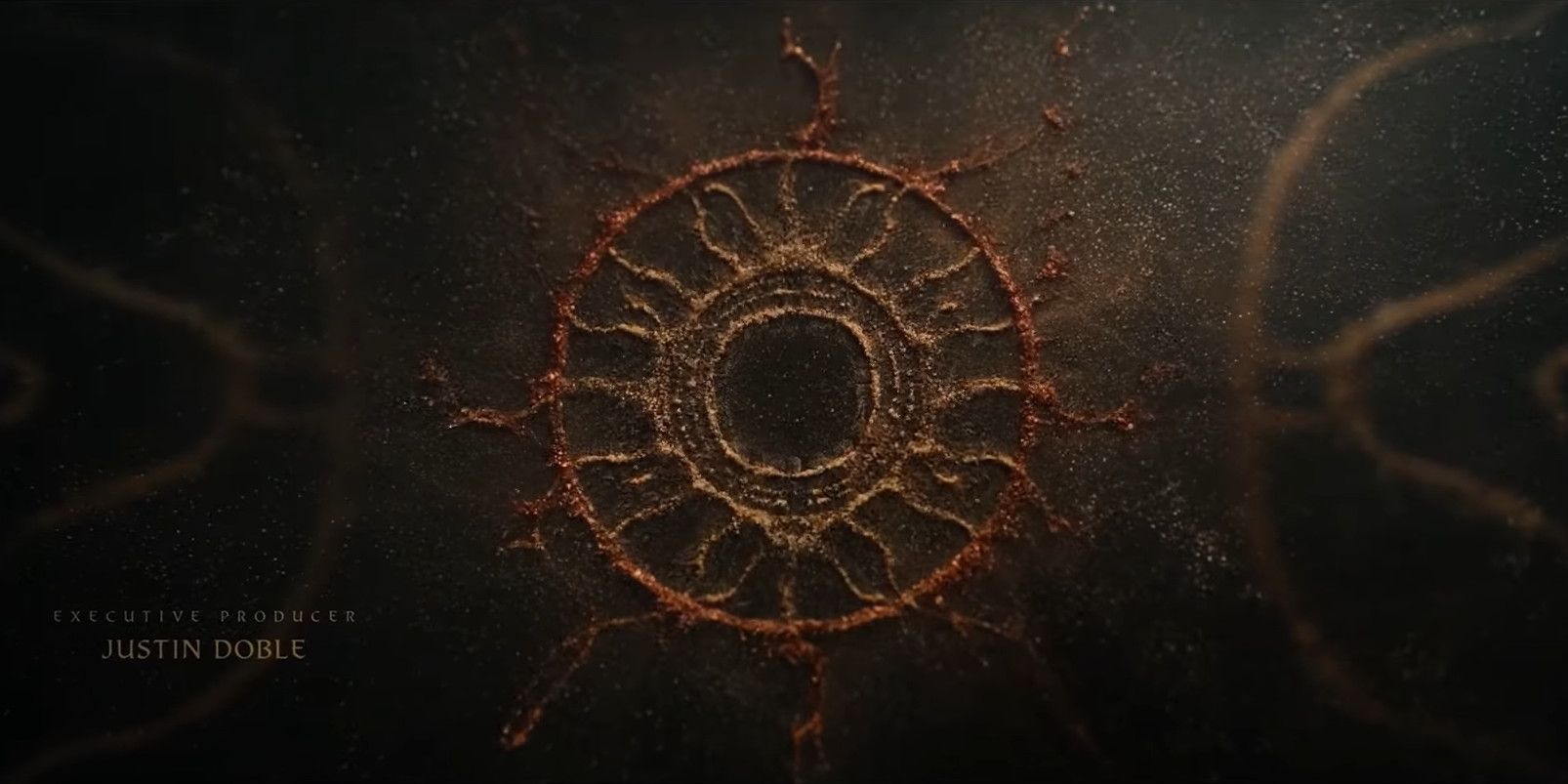




The sand briefly took the shape of the Doors of Durin, which Celebrimbor and Narvi worked together to create this season, but it then quickly transformed into the horns of a Balrog. This referenced Durin’s Bane, the Balrog that the Dwarves awoke beneath Moria. After a small teaser in the first season, it played a major role in the second, claiming the life of King Durin III in the finale. As the image of the Balrog faded away, it revealed concentric circles resembling the Eye of Sauron. Surprisingly, Sauron has not yet made use of an eye symbol in The Rings of Power, but a similar insignia appeared on the flags of the masked nomads from Rhûn who worked for the Dark Wizard. The eye in the title sequence was made of both gold and red sand, which matched Tolkien’s descriptions of the Eye of Sauron from The Lord of the Rings. In the chapter “The Mirror of Galadriel” from The Fellowship of the Ring, he stated that it was “yellow as a cat’s,” but in “The Tower of Cirith Ungol” from The Return of the King, he referred to it as “a flame of red.” Gold and red were also the colors of the One Ring, as red text appeared on its gold surface when it was exposed to heat.
In the novel version of The Lord of the Rings, Sauron marked his Orcs’ armor with the symbol of a red eye.
The final recognizable image in the second season’s title sequence was the crown of Morgoth, which Tolkien called the Iron Crown in his novels. Morgoth’s crown was an important item throughout the season. In the first episode, Adar used it to stab Sauron, signaling for the Orcs to follow suit. Later in the season, Adar showed the crown to Galadriel and told her that, combined with her Ring of Power, it might be capable of destroying Sauron once and for all. In the season finale, Sauron claimed the crown for himself and used it to stab Galadriel, which would have been fatal if Elrond had not healed her afterward. None of these symbols were a necessary part of the title sequence — they could have just been cool, meaningless images for viewers to look at as the opening credits played — but The Rings of Power‘s artists put in the extra effort of referencing both the show’s events and the wider lore of Tolkien’s legendarium as a treat for fans of The Lord of the Rings.
News
The Lincoln Lawyer Season 3 Showrunner On High Stakes Season 4 Setup, Mickey & Andy’s Romance & That Twist Ending
Following the release of The Lincoln Lawyer season 3 on Netflix, showrunner and writer Ted Humphrey spoke with ScreenRant about Mickey’s new romance, his undying love for Maggie, and where the story is headed in season 4. Based on the Mickey Haller book series…
Wizards Beyond Waverly Place First Reviews Are In, & Critics Agree The Disney+ Sequel Is A Spellbinding Return
Wizards Beyond Waverly Place‘s first reviews are in, and critics agree the Disney+ sequel series is a spellbinding success. Serving as a spin-off and sequel to Wizards of Waverly Place, the Disney Channel series follows a new talented young wizard named…
Emily In Paris Star Is Conflicted About Season 5 Return Due To Creative Differences: “It Makes Me Question”
Lucas Bravo, who plays fan-favorite Gabriel on Emily in Paris, opens up about his frustrations with the creative direction of the show ahead of season 5, hinting at the possibility of not returning for the next installment. The hit Netflix series,…
10 Best Madison Bailey Movies & TV Shows Ranked
Madison Bailey has become famous for starring in the popular Netflix series Outer Banks, but she has played noteworthy roles in multiple TV shows and movies. Bailey got her start in acting in the mid-2010s by appearing in small, one-off episodes of…
Outer Banks: What Happened To Sarah & Rafe’s Biological Mom?
There are several mysteries Outer Banks still needs to answer, including what happened to Sarah Cameron’s (Madelyn Cline) mom. The hit Netflix series has continued to explore more of its main characters’ families as it has progressed. Outer Banks season 2 included the big…
Outer Banks Star Madelyn Cline: Her Best Movies & TV Shows
Outer Banks’Madelyn Cline has become a breakout star thanks to her lead role in the Netflix hit drama adding to her already impressive list of movies and TV shows. However, Outer Banks is far from Madelyn Cline’s first gig. Her first role was…
End of content
No more pages to load
